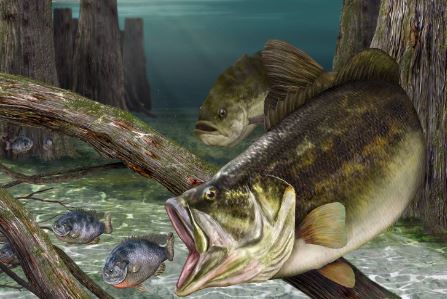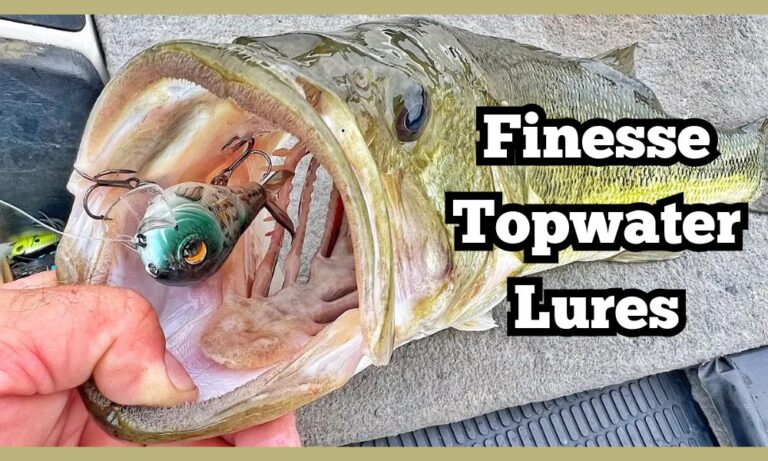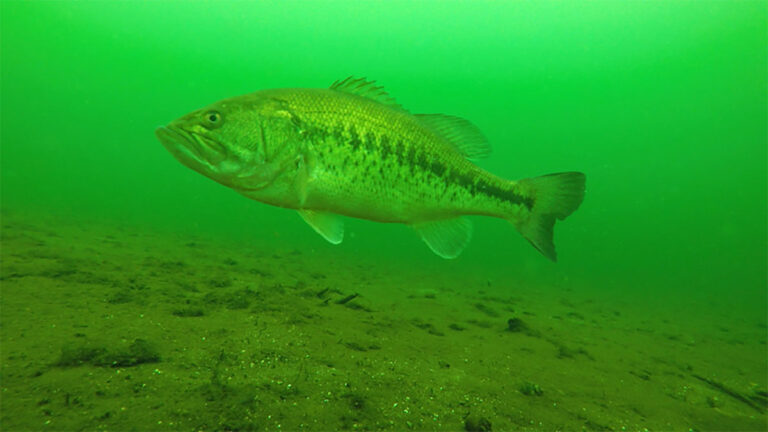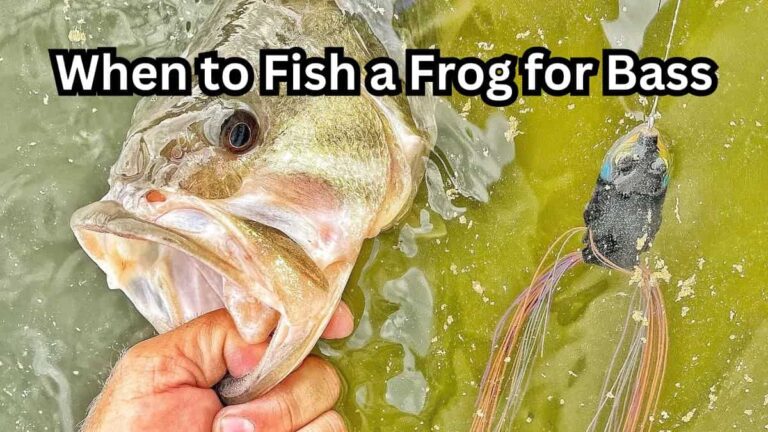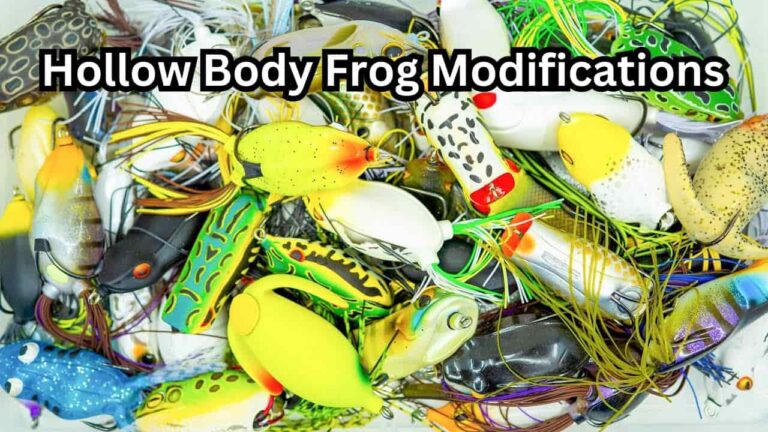Best Lures for Pond Bass in Spring
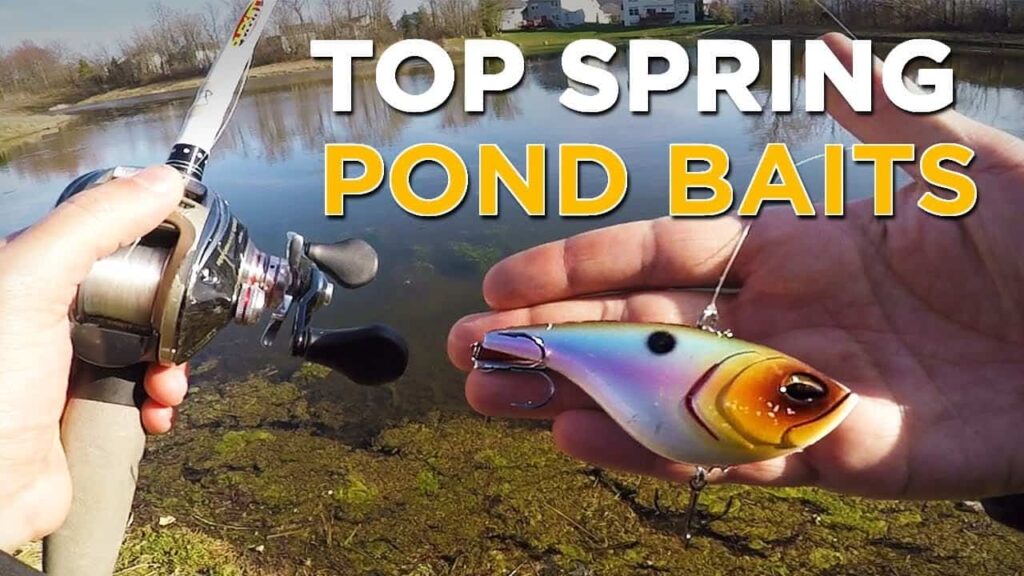
As soon as the spring starts rolling around, I start bass fishing. I love pond fishing all year, but especially during the spring months.
The spring gives anglers a wide range of conditions because of the behavior changes of bass.
Bass go through three phases just in the spring months, so you need a wide range of lures to catch the throughout each phase.
3 Phases of Spring
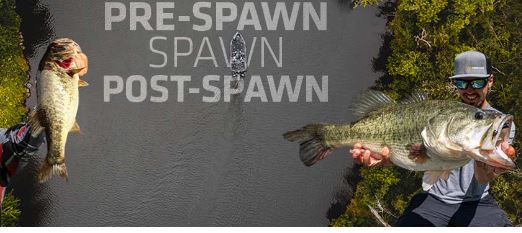
The three phases of spring are the pre-spawn, the spawn, and the post-spawn.
Each phase has very different water conditions and bass behavior.
When largemouth bass fishing small ponds, you really need to be keyed into which phase the bass are currently in because the water temperatures change very quickly in small ponds.
Pre-Spawn

The pre-spawn period is during the late winter and early spring transition as waters begin to warm back up.
In the pre-spawn, big bass are leaving the deeper water and coming into shallower water. These early spring bass are eating as much food as the can so that they have enough energy to spawn.
The pre-spawn is a short period of time in small ponds because the water temperatures quickly get high enough for bass to begin building their bed and spawning.
Best Lures for Pre-Spawn Pond Bass Fishing
You wan to use lures that are slower moving, aggressive, and can be fished deep in the water column.
Bass have started biting, but don’t have enough energy or metabolism to chase after fast prey.
1. Lipless Crankbaits
I throw shad or crawfish patterns in the early pre-spawn season. If my pond doesn’t have shad, I will use crawfish patterns 90% of the time.
If the pond does have shad, I will go about 50/50 between the two patterns.
I like to Yo-Yo the lipless crankbaits in the pre-spawn because water temperatures are still quite cold and big bass aren’t as willing to chase after fast moving lures.
2. Glide Baits
I have found that glide baits work particularly well when early spring pond fishing.
This is mainly because glide baits can’t be fished very deep, and small ponds don’t tend to have deep water.
This big, realistic lure persuades lots of huge early spring bass to bite.
3. Drop Shot
I always have a finesse rig tied on when bass fishing cold water of any kind.
The drop shot is my all time favorite finesse rig and it catches me tons of pre-spawn bass every year.
Since ponds typically don’t have many ledges or distinct depth changes, the drop shot becomes more of an open water lure.
I fish it a bit faster and aggressively than I normally would. I have found that red colored worms and creatures baits produce the best when it comes to early spring soft plastics.
Spawn
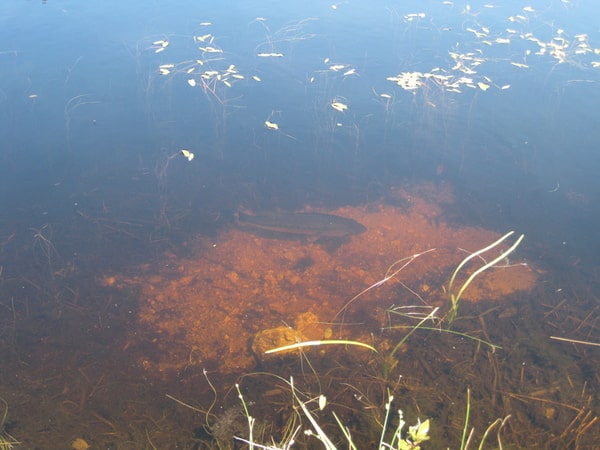
The spawn phase is when bass have eaten enough, water temperatures are high enough, and bass actually begin the process of building their bed.
They move up into shallow flats and can be seen very clearly lining the bank.
The spawn lasts until the fry have hatched and matured to the point that they can survive on their own.
Bass don’t eat at all during this phase so catching bass can be a bit tricky for beginner anglers.
When spawning, big bass bite your bait they aren’t really trying to eat it, they are just trying to get it off their bed to protect their young.
Best Lures for the Spawn
When you are fishing for spawning bass, you are primarily sight fishing. You find a bass on a bed and try to annoy it enough to bite.
You want lures that can be fished in one spot for as long as possible
1. Tokyo Rig
The Tokyo rig is not very popular or main stream bass fishing setup, but trust me, it flat out works. A Tokyo rig is kind of like a drop shot mixed with a Texas rig.
The weight hangs below the hook and swings freely. This gives the bait more free and fluent action.
I usually use bluegill or crawfish imitations and wiggle or hop the bait on the bass’s bed as much as I can per cast.
2. Weightless Senko
When I say “Senko”, I am referring to soft plastic stick baits as a category, not the Senko specifically. I actually use the Yum Dinger and not the Senko.
The two ways I rig the stick bait are the wacky rig and weedless hooked without a weight.
I don’t want a weight on the rig so that I can let the bait flutter down in front of the bass as slowly as possible.
I also use light wire hooks to cut down on weight as much as possible. Let the bait flutter down onto the bed, lift it up, and repeat.
3. Ned Rig
I usually use either small stick baits or compact creature baits when bed fishing for these spring pond bass.
I like the Ned rig over bass jigs and Texas rigs because of the exposed hook.
Since these bass are not actually trying to eat the bait, they often nip at it or bite it very lightly.
Bass jigs and rigs with texposed hooks are often pulled right out of their mouth when setting the hook.
Post-Spawn
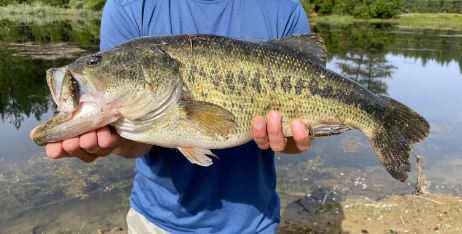
The hungry bass have just come off of a long and tiresome spawn, and are ready to eat.
They are a bit tired from the spawn, so you don’t want to fish lures to quickly.
Bass have left their spawning areas and you are no longer able sight fish for them consistently.
By the end of the spawn, pond have started to become very weedy.
The water is very warm and still on the rise, so bass’s metabolism is quite high.
Bass are willing to eat big and often.
Also Read: When is Post Spawn for Bass Fishing?
Best Lures for the Post-Spawn
Think big, easy, and weedless. The post-spawn ponds are very grassy and limit the baits you can throw.
These bass have high metabolisms and are hungry after a draining spawn. Make it easy for them by throwing bit, slower lures.
Also Read: Best Post Spawn Bass Lures
1. Hollow Body Frog
It doesn’t get more weedless than a top water frog. By this time in the year, amphibians have started to be active and highly populated in ponds.
Imitating a chunky frog on the surface is a very filling and easy meal for bass that will not get snagged on any weeds or structure.
2. Weedless Senko
Again, I am not specifically talking about the Senko, but you know what I mean. I obviously don’t fish this rig the same way that I did during the spawn.
Instead, I will make long casts and twitch it in like I would a jerkbait or a fluke style bait.
It is a very weedless finesse technique that catches tons of bass. The only problem is that it tends to catch lots of small bass.
Big ones will eat it too, but the small ones often get to it before the lunkers have a chance.
3. Spinnerbait
I love throwing a spinnerbait in shallow post-spawn ponds. If the water is a bit deeper, I will use a single Colorado blade spinnerbait and slow roll it.
But if the water is as shallow as most ponds (4-8 feet) then I will throw a basic spinnerbait setup.
I love using bluegill and baby bass patterns.
The baby bass really seem to work since there are so many tiny bass swimming around from the spawn.
Also Read: Best Bluegill Swimbaits
Key Points
- Spring Phases: Spring bass fishing revolves around three key phases – pre-spawn, spawn, and post-spawn, each marked by distinct water conditions and bass behavior.
- Pre-Spawn Tactics: In the pre-spawn, as bass move from deeper to shallower waters, use slower-moving, aggressive lures like lipless crankbaits, glide baits, and drop shots. Focus on shad or crawfish patterns.
- Spawn Strategies: During the spawn, where bass are focused on protecting their nests, sight fishing becomes crucial. Employ techniques such as Jika rigs, weightless Senkos, and Ned rigs for effective bed fishing.
- Post-Spawn Approaches: After the spawn, when bass are recovering and actively feeding, target weedy areas with big, easy, and weedless lures like hollow body frogs, weedless Senkos, and spinnerbaits.
- Metabolism Consideration: Adjust your lure presentation based on bass metabolism, using slower retrieves in post-spawn to entice recovering bass.
- Pond-Specific Challenges: Small ponds experience rapid temperature changes; therefore, understanding the specific phase is essential for successful bass fishing.
FAQ
Q1: What are the best lures for pre-spawn bass fishing in small ponds? A1: For pre-spawn bass in small ponds, opt for slower-moving, aggressive lures like lipless crankbaits in shad or crawfish patterns, glide baits, and drop shots with red-colored worms or creature baits.
Q2: How should I approach bass fishing during the spawn phase? A2: During the spawn, focus on sight fishing and irritating bass on their beds. Use Jika rigs, weightless Senkos, and Ned rigs, presenting them with subtle movements to trigger protective bites.
Q3: What lures work best for post-spawn bass in weedy ponds? A3: In post-spawn, target weedy areas with big, easy, and weedless lures. Hollow body frogs, weedless Senkos retrieved with twitches, and spinnerbaits in bluegill or baby bass patterns are effective choices.
Q4: Why is understanding bass behavior crucial for successful spring pond fishing? A4: Bass behavior varies during pre-spawn, spawn, and post-spawn phases, influencing their feeding habits. Adapting your lure selection and presentation to match these behaviors increases your chances of success during each phase.
Reeling this In
Spring ponds are a great place for bass fishing during the spring season. Each phase has its own challenges and advantages.
As long as you know what phase you are in and bass behavior during these phases, you can match the right lure to your condition and have lots of success.
Ponds heat up the quickest, so the transition seasons like spring and fall are very fast.
Don’t let the quick pond fishing season pass you by. Largemouth bass fishing is terrific during this phase because bass tend to be quite aggressive.
Get out there and catch them all on your next fishing adventure!
